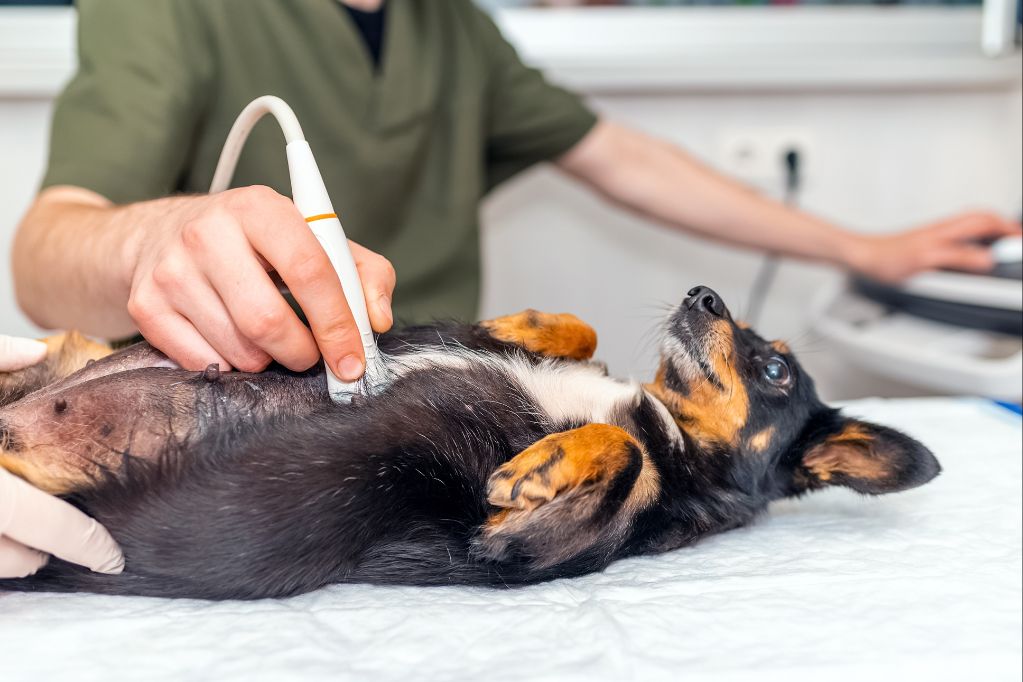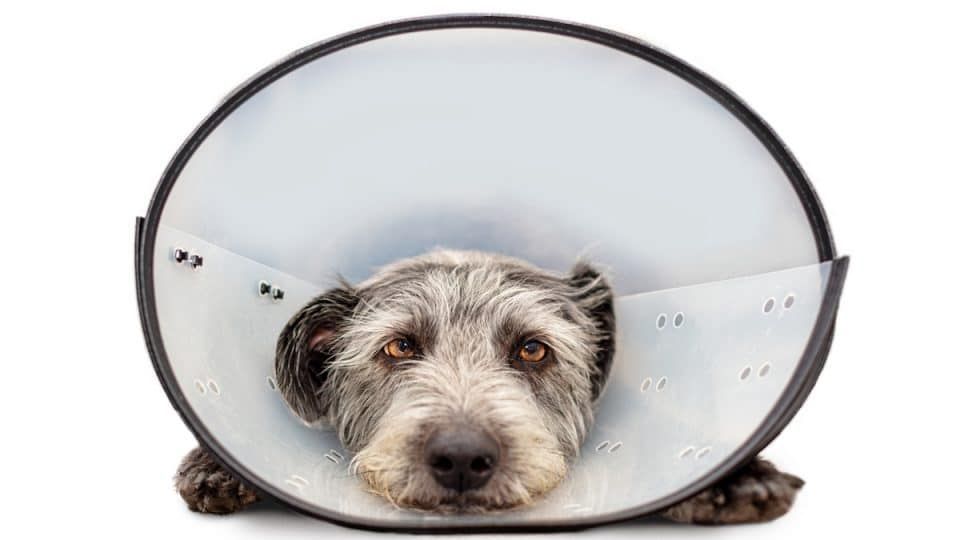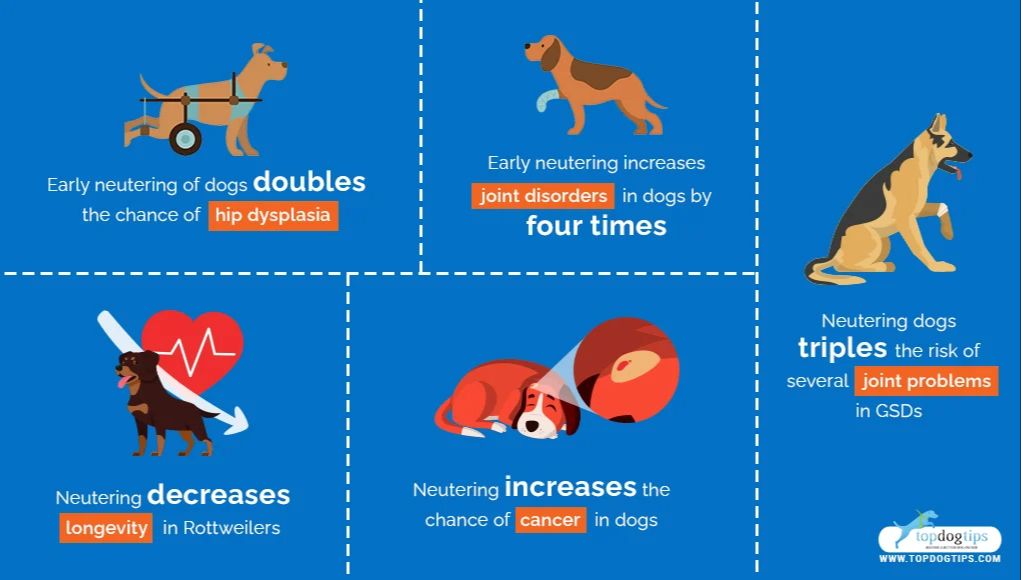What is a dog spay?
A dog spay, also known as an ovariohysterectomy, is a surgical procedure performed by a veterinarian to sterilize a female dog. During the surgery, the vet removes the dog’s ovaries and uterus. This eliminates the dog’s ability to become pregnant and go into heat.
Spaying is a very common surgery recommended for most female dogs not intended for breeding. There are several benefits to spaying a dog:
- Prevents unplanned litters of puppies
- Eliminates the risk of pyometra, a life-threatening uterine infection
- Reduces the chances of mammary gland tumors later in life
- May reduce undesirable behaviors associated with the heat cycle
For these reasons, spaying is widely encouraged by vets, shelters, and rescue groups as a responsible way to own a female dog.
Reasons for wanting to reverse a spay
There are two main reasons a dog owner may consider reversing their dog’s spay:
Want to breed the dog
Some owners change their mind after spaying their dog and decide they would like to breed her. Breeding offers the experience of producing puppies and continuing the dog’s lineage. Owners who want to breed their dog must get the spay reversed.
Health concerns
In rare cases, health issues potentially linked to spaying may prompt owners to consider reversal. Some studies have associated spaying with increased risk of certain joint disorders, urinary incontinence, and some cancers later in life. If a vet believes the spay could be contributing to a dog’s health issues, reversal may be discussed as an option to possibly improve the dog’s health.
Is it possible to reverse a spay?
While spay surgery is generally considered permanent, it is possible to attempt to reverse the procedure and allow a female dog to potentially become fertile again. However, reversing a spay is complex, expensive, and has no guarantee of success. There are significant challenges involved.
During a spay surgery, the ovaries, oviducts, and uterus are completely removed, leaving no remaining reproductive organs. This makes true reversal impossible, as those organs cannot be put back. However, surgeons can attempt to reconstruct the female dog’s reproductive tract in a way that may restore fertility.
This is done by surgically creating a neo-uterus, neo-cervix, and neo-vagina for the dog. The reconstructed tract aims to facilitate conception and carry pups to term. However, creating this reconstructive anatomy is extremely difficult and there are risks of complications.
Additionally, dogs who have had long-ago spays may have scar tissue buildup that makes surgical reversal more complex. The age of the dog and time since spay can negatively impact the chances of successful reversal.
So while surgical reversal is possible to attempt, it is a last resort option with no guarantee of restoring fertility. There are major obstacles in reconstructing the reproductive anatomy. Pet owners should carefully consider the risks before pursuing reversal procedures.
Surgical reversal procedures
There are a few different surgical procedures that can potentially reverse a spay in dogs. The main options are:
Ovary reimplantation
This procedure involves reattaching the ovaries and uterus back into their original positions and reconnecting the blood supply. Success rates vary, but some studies have shown around a 50% chance of restoring fertility with this technique.
Ovary transplantation
The ovaries are transplanted back into the body and reconnected to blood vessels. This has a lower success rate than ovary reimplantation, with only around a 30% chance of restoring fertility.
Artificial insemination
Eggs can be harvested from the ovaries and then fertilized in a lab before being surgically implanted into the uterus. This has a relatively high success rate but requires advanced reproductive technology.
The risks involved in surgical reversal include anesthesia complications, infections, bleeding, scar tissue formation, and embolisms. There is also no guarantee that fertility will be restored even if the surgery is technically successful. The procedures are expensive, invasive, and may fail to actually reverse the spay. Careful consideration of the risks and benefits is required.

Non-surgical options
While surgical reversal is the most direct way to reverse a spay, there are some non-surgical options that may work in certain cases. These primarily rely on hormone therapy or ovary transplantation to try to restore fertility and heat cycles after spaying.
Hormone therapy involves administering hormones like estrogen and progesterone to mimic natural cycles. This may stimulate heat cycles in some dogs, especially if done soon after spaying before the ovaries have completely atrophied. However, hormone therapy alone does not typically allow for pregnancy and natural conception.
Ovary transplantation is an experimental technique that involves surgically implanting ovarian tissue from a donor dog into the spayed dog. If successful, this may allow for natural hormone production and even ovulation and pregnancy. However, this procedure is still in the early research stages and not readily available. Success rates are low and there are risks like tissue rejection.
While non-surgical options avoid the risks of surgery, they are less reliable for truly reversing spaying in most cases. The best candidates are dogs spayed very recently where the ovaries have not fully deteriorated. For dogs spayed long ago, surgical reversal may be the only option.
Costs of reversal
If you choose to surgically reverse your dog’s spay, you can expect to pay anywhere from $1,500 to $4,000 depending on the complexity of the procedure. This cost will cover anesthesia, surgical facilities and equipment, medications, and post-op veterinary care. Non-surgical options like hormone therapy tend to cost less initially, ranging from $200 to $500. However, these treatments need to be continued long-term to maintain results. Some factors that influence the overall cost of reversal include:
- Your dog’s age and health status
- Type of procedure (full reversal vs. partial)
- Your geographic location
- Veterinarian experience and fees

It’s a good idea to get cost estimates from multiple vets before deciding how to proceed. And be sure to factor in not just the initial procedure cost, but also expenses for lab tests, medications, and follow-up appointments which can quickly add up.
What to expect after reversal
The recovery process after a spay reversal surgery can take several weeks. Your dog will need to take it easy during this time to allow the internal incision to fully heal. You’ll need to limit your dog’s activity and prevent them from running, jumping, or playing too roughly. Follow all post-op care instructions from your vet, including administering any medications and restricting food and water intake as directed.
Once your dog has recovered from the surgery, she may be able to get pregnant and have puppies. However, the ability to conceive after a reversal is not guaranteed. It depends on several factors, such as how long ago the initial spay was performed, your dog’s age, and whether there were any complications during the reversal surgery. The tubes that transport eggs from the ovaries to the uterus can become scarred over time, making natural conception difficult. But some dogs are able to conceive within several heat cycles after a successful spay reversal. Discuss your particular case with your veterinarian to understand the likelihood of breeding after reversing your dog’s spay.
Risks and Complications
Reversing a spay surgery carries both short and long-term risks that pet owners should carefully consider. Some of the potential complications include:
Infection – Any surgery poses a risk of infection, and a spay reversal is no different. Infections can become serious if left untreated.
Bleeding – Heavy bleeding during or after surgery is a possibility. Rarely, a blood transfusion may be required.
Reaction to anesthesia – Anesthesia carries inherent risks, including breathing difficulties or heart arrhythmias. Your vet will monitor your dog closely during surgery.
Dehiscence – The incision can weaken or open up following surgery. This requires prompt veterinary attention.
Adhesions – Internal scarring from the original spay may make the reversal surgery more difficult and lead to adhesions forming.
Incontinence – Damage to the ureters during surgery could potentially lead to urinary incontinence.
Pyometra – Reversal restores the risk of developing a life-threatening uterine infection called pyometra, which spaying prevents.
Pregnancy complications – Future pregnancies may have increased risks like miscarriage, stillborn puppies, or complications during delivery.
It’s critical to weigh if the benefits of reversal outweigh these potential risks to your dog’s health and wellbeing.
Success rates of reversal
The success rates for surgical reversal procedures vary depending on the method used and the surgeon’s experience. Overall, success is generally defined as restoring fertility so pregnancy can occur, with reported pregnancy rates ranging from 30% to 70% after reversal surgery.
With tubal ligation reversal surgery, pregnancy rates within the first year after surgery are estimated to be:
- 50-80% after microsurgical reversal
- 40-65% after laparoscopic reversal
- 30-60% after tubal anastomosis reversal
Success rates tend to be higher the younger the female dog is, if less tissue was removed during the original spay, and when performed by an experienced reproductive specialist. The section of the tubes nearest the uterus has the best blood supply and is most optimal for reconnection.
It’s important to note that while reversal can restore fertility, factors like the dog’s age will impact chances of conception and carrying a pregnancy to term. Working closely with your veterinarian is important for monitoring effectiveness after surgery.
Deciding if reversal is right
Reversing a spay is a complex decision that requires carefully weighing the risks and benefits. Here are some important factors to consider:
Consider health risks
Reversal surgery and pregnancy both carry significant health risks that need to be discussed with your vet. Older dogs and dogs with health conditions may not be good candidates. Make sure you fully understand the dangers before proceeding.
Alternatives like adoption

Instead of reversal surgery, you may want to consider adopting a dog who can breed. This avoids the risks of operating on your current dog. Adoption also helps give homes to dogs in need.
Talk to a vet
Have an in-depth discussion with your veterinarian about whether reversal is appropriate for your dog. They can provide insights based on your dog’s health history and age. Vets can also explain what the reversal process involves and the likelihood of success.
Reversing a spay is not something to be done lightly. Think through all the factors involved to determine if it is the right choice for you and your dog. Most importantly, ensure your dog’s wellbeing remains the top priority.

